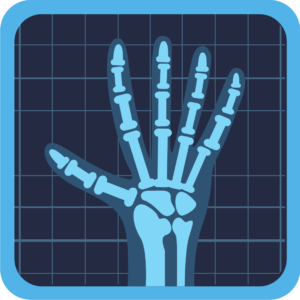
Radiologist are like quiet guardians in the complex world of contemporary healthcare, having ability to unlock the secrets hidden inside the human body. These medical investigators, who frequently operate in the background, are essential in identifying diseases, recommending courses of action, and eventually saving lives.
The Eyes of Medicine:
As the eyes of medicine, radiologist use a variety of techniques, including MRIs, CT scans, X-rays, and ultrasounds, to look inside the human body. Equipped with an acute sense of detail and a deep comprehension of anatomy and pathology. They decipher these images with accuracy and proficiency.
Interpreting the Invisible:
Radiologists are not just experts at finding anomalies but they also have the rare capacity to interpret the nuances buried within thousands of pixels in a picture. They find indications of a variety of illnesses, cancer to pneumonia, and can differentiate between benign and malignant tumors. They can also identify bone fractures or anomalies.
Guiding Treatment Decisions:
Across all medical disciplines, radiologists’ insights play a critical role in directing treatment decisions. Preoperative imaging helps surgeons plan complex surgeries precisely; oncologists use it to track how a tumor responds to treatment. Emergency physicians rely on quick readings to prioritize patient care in life-threatening circumstances.
Pioneering Innovation:
Radiologist excel in diagnosis, but they also lead the way in healthcare technology innovation. To improve picture processing, increase the accuracy of diagnoses, and optimize operations, they leverage the potential of AI and ML. Radiologists are continually expanding boundaries in medical imaging and revolutionizing patient care via the use of modern technologies.
Collaborative Care:
Radiologists perform an essential part in interdisciplinary healthcare teams, despite working much of their free time isolated behind computers. To provide complete patient care, they work closely with physicians, surgeons, pathologists, and other experts. They offer important insights that influence treatment approaches and enhance patient outcomes through interdisciplinary communication and collaboration.
The Human Touch:
The human touch is still fundamental to radiology even though technology has changed the practice. Every image that is read and every diagnosis that is made represents a patient whose journey is greatly influenced because of the radiologist’s skill and compassion. Radiologists treat patient with the respect they deserve, seeing past the pixels to the human tales hidden within each image.
Conclusion:
Radiologists remain vital in the constantly changing field of healthcare, helping to solve the puzzles surrounding the human body and directing the treatment of patients. Radiologists serve as rays of hope and healing on the path to improved health and brighter futures because of their unmatched knowledge, inventive use of technology and unshakable dedication to patient well-being.
